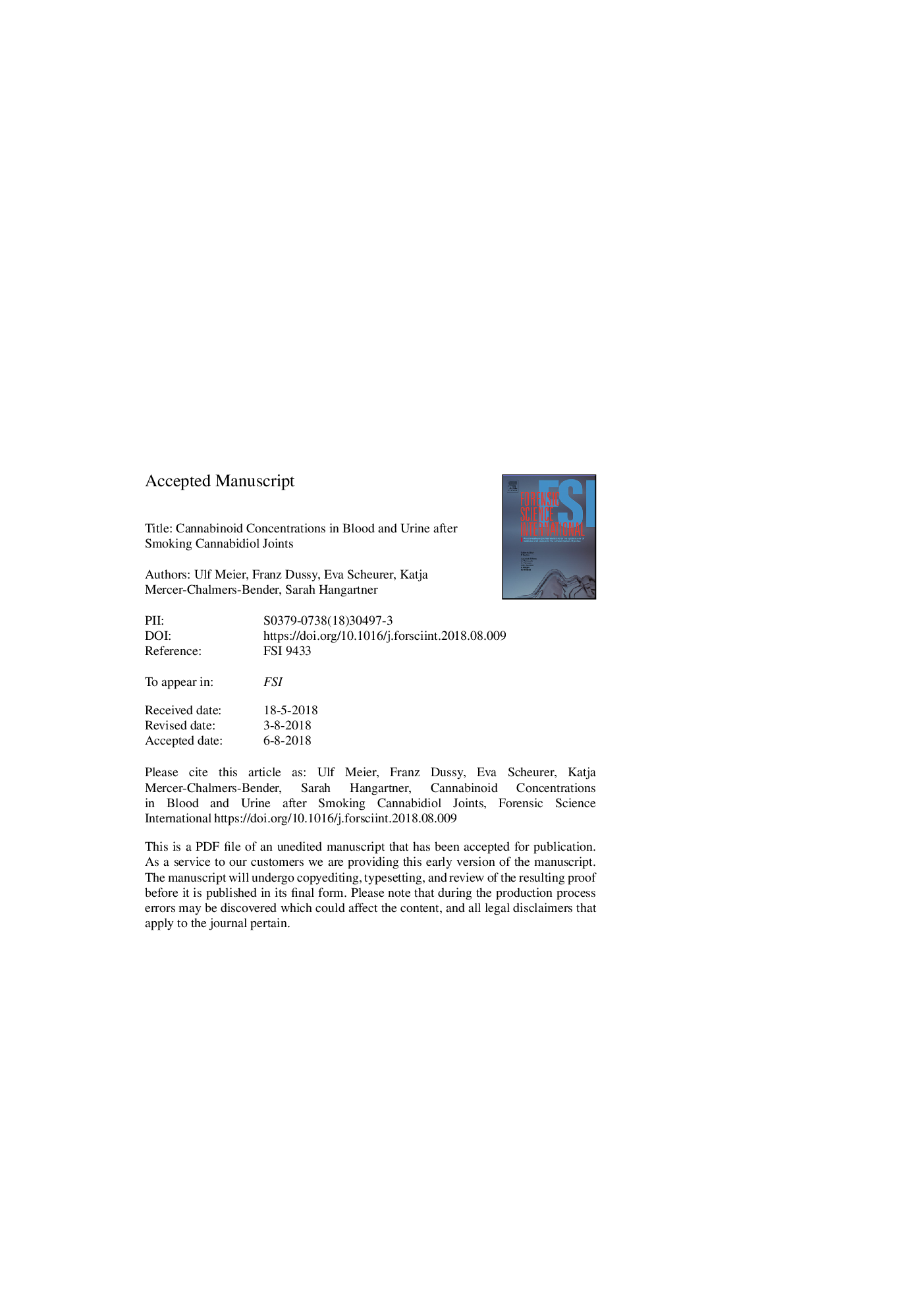| Article ID | Journal | Published Year | Pages | File Type |
|---|---|---|---|---|
| 8941381 | Forensic Science International | 2018 | 15 Pages |
Abstract
In Switzerland, the sale of cannabis with tetrahydrocannabinol (THC) content less than 1% has recently been legalized. As a consequence, cannabis with low THC and high cannabidiol (CBD) values up to approximately 25% is legally available on the market. In this study, we investigated cannabinoid blood and urine concentrations of a naive user and of a modeled chronic user after smoking a single CBD joint. Chronic use was modeled as smoking 2 joints per day for 10 days. Joints contained 200Â mg of cannabis with THC concentrations of 0.94% and 0.8% and CBD concentrations of 23.5% and 17% in the naive-smoker and chronic-smoker experiment, respectively. After smoking, blood and urine samples were collected for 4 and 20Â h after smoking start, respectively. THC blood concentrations reached 2.7 and 4.5Â ng/mL in the naive and chronic user, respectively. In both cases, the blood THC concentration is significantly above the Swiss road traffic threshold of 1.5Â ng/mL. Consequently, the user was legally unfit to drive directly after smoking. CBD blood concentrations of 45.7 and 82.6Â ng/mL were reached for the naive and chronic user, respectively. During the 10-day smoking period, blood and urine samples were regularly collected. No accumulation of any cannabinoid was found in the blood during this time. Urinary 11-nor-9-carboxy-THC concentrations seemed to increase during the 10-day period, which is important in abstinence testing.
Keywords
Related Topics
Physical Sciences and Engineering
Chemistry
Analytical Chemistry
Authors
Ulf Meier, Franz Dussy, Eva Scheurer, Katja Mercer-Chalmers-Bender, Sarah Hangartner,
